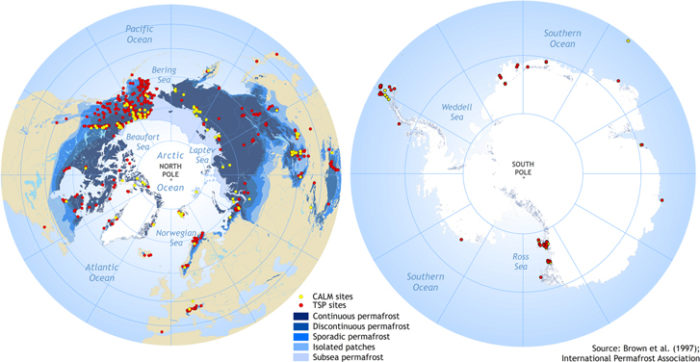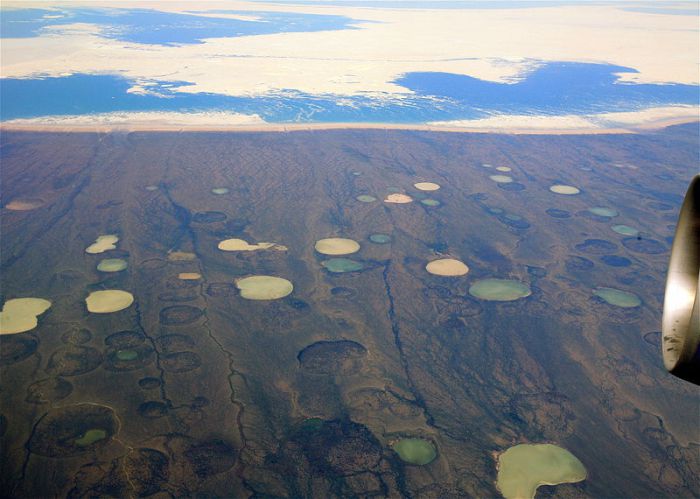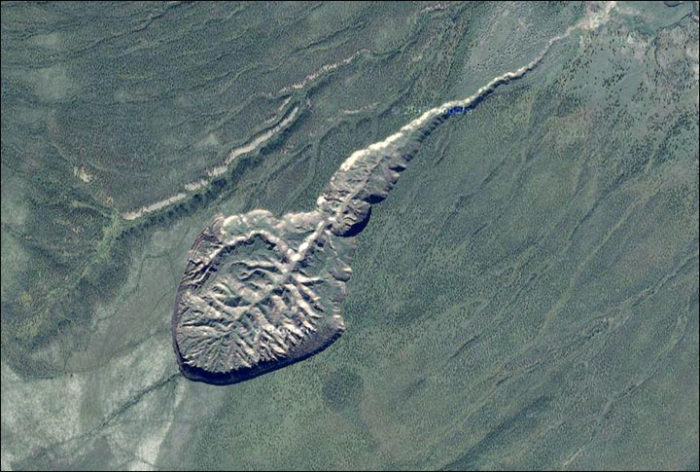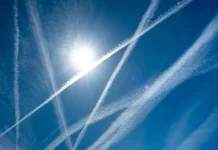In places like northern Canada and Siberia, a memory of ice ages long past is locked away in the very soil.
And when permafrost melts it changes the land around it: Giant craters form, methane blow holes and strange methane pockets ready to blow appear. It’s the new landscape of the changing northern Hemisphere.
In Canada and Siberia, if you dig about three feet down in the ground, you’ll encounter a layer of frozen earth running from 200 feet to almost a mile deep in some places. It’s like a great glacier secreted away underground and covering about 19 million square kilometers of the Northern Hemisphere. We call this frozen ground permafrost.
An Enormous Pile of Sequestered Carbon
Permafrost generally forms in regions where the mean annual temperature is below zero degrees Celsius. And the presently large expanse of permafrost has formed over the past 2-3 million years in which long, cold ice ages and short, and somewhat warmer interglacial periods have dominated.

Locked away in all that permafrost is a massive store of carbon. Recent research indicates that up to 120 billion tons of carbon could be released through thawing permafrost this Century due to Earth changes.
Evidence of Thaw and a Building Carbon Feedback
Scientific evidences show that the Arctic to rapidly warm — at about 3 times faster than the rate of warming for the rest of the globe (0.6 C per decade in the Arctic). As a result, the permafrost is melting.

When permafrost melts it changes the landscape. Land subsides and deforms as the icy permafrost below collapses when it thaws. The resulting underground cavities can also telegraph to the surface in the form of sinkholes. In places where microbes or hydrates are present, the cavities can fill with gas — which can sometimes erupt in a methane blow hole or ‘hell’s mouth’ crater. In Canada, a new study recently discovered that 52,000 square miles of northwestern permafrost is already thawing. The thaw is producing large sink holes, causing coastlines to rapidly erode, and proliferating the round ponds known as thermokarst lakes.

But it’s not just Canada that’s feeling the thaw. In Siberia, warming is also eating away at the permafrost. And what is happening there is arguably on a much grander and more disturbing scale than what we presently see in Canada. In East Siberia, for example, a 100 meter deep, 1 kilometer long crater has formed in the sagging Permafrost. It is officially called the Batagaika crater. But the locals know it as the Gateway to the Underworld. The crater began as a small deformation during the 1960s when permafrost thaw in the region initiated. It has, over the decades, grown considerably larger — with the growth rate accelerating along with permafrost melt during recent years.
Further west, the Yamal region of Russia is seeing strange bulges dispersing across the land. The bulges are being caused by bubbles of methane gas beneath the surface. The scientists state that these formations are likely being triggered by warming — in which either methane hydrates trapped within the permafrost are thawing or where microbes have come in contact with thawed permafrost carbon to break it down and produce methane.
These same researchers now note that some 7,000 underground methane bubbles exist in this region and that warming is pushing them to erupt. When the pressure below the land surface reaches a critical point, the land above can be displaced — bursting outward.
Touchy Subject Scientifically and Politically
Permafrost thaw producing high volumes of feedback carbon release is a touchy subject in the sciences and politically. But it has to be further discussed and better understood in order to protect the future of next generations to come. I don’t want to leave my children with a northern Gruyere swiss cheese landscape.













[…] From Canada to Siberia, permafrost thaw produces ‘hell’s mouth’ craters, sinking lands, and 7,… […]
[…] Strange Sounds – From Canada to Siberia, permafrost thaw produces ‘hell’s mouth’ craters, sinking lands, and 7,… […]